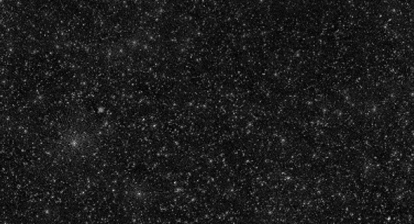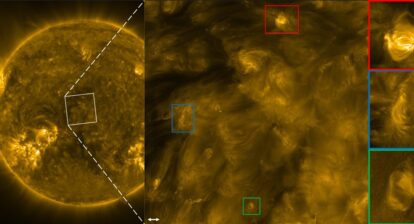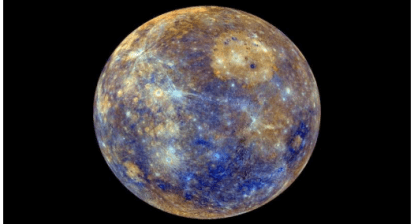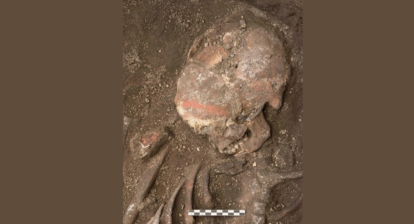Scientists discover first nitrogen-fixing organelle
For decades, science has understood nitrogen fixation as a process solely performed by bacteria. This long-held undestanding has been shattered with the discovery of a nitrogen-fixing organelle within a eukaryotic cell. This marks the fourth known instance of primary endosymbiosis, a rare process where a prokaryotic cell becomes an organelle within a eukaryotic one.
Prokayotic cells: A prokaryote is a single-cell organism whose cell lacks a nucleus and other membrane-bound organelles
Eukaryotic cells: These are organisms whose cells have a membrane-bound nucleus. All animals, plants, fungi, and many unicellular organisms are eukaryotes
We became what we did because a archaea absorbed a bacterium, the two became one, with the bacterium finally becoming the mitochondria that powers our cells. Later on it happened again, when the absorbed bacterium became the chloroplast, giving plants the ability for photosynthesis.
“It’s very rare that organelles arise from these types of things,” said Tyler Coale, a postdoctoral scholar at UC Santa Cruz and first author on one of two recent papers. “The first time we think it happened, it gave rise to all complex life. Everything more complicated than a bacterial cell owes its existence to that event,” he said, referring to the origins of the mitochondria. “A billion years ago or so, it happened again with the chloroplast, and that gave us plants,” Coale said. “The third known instance involves a microbe similar to a chloroplast.”
This discovery, published in two recent papers, upends the paradigm of nitrogen fixation. The newly identified organelle, dubbed a “nitroplast,” resides within a marine alga and represents a significant leap in our understanding of organelle evolution.
The discovery involved a fascinating journey. In 1998, a mysterious DNA sequence hinted at the existence of a nitrogen-fixing cyanobacterium in seawater. Years of research led to the identification of UCYN-A, the organism responsible for the sequence. Simultaneously, a Japanese scientist successfully cultured the marine alga hosting UCYN-A, paving the way for further investigation.
While initially considered an endosymbiont, recent studies reveal a deeper connection. The size ratio between UCYN-A and its host remains consistent across different alga species, and their metabolisms are intricately linked. This synchronisation, mirroring the relationship between mitochondria and chloroplasts with their host cells, led researchers to classify UCYN-A as “organelle-like.”
“That’s exactly what happens with organelles,” said Jonathan Zehr, a UC Santa Cruz distinguished professor of marine sciences. “If you look at the mitochondria and the chloroplast, it’s the same thing: they scale with the cell.”

A soft x-ray tomography image shows B. bigelowii cell division, with the nitroplasts (UCYN-A) in cyan. (Photo credit: Valentina Loconte)
Further evidence solidified this classification. Studies showed UCYN-A imports proteins from its host, a hallmark of organelle evolution. Specific amino acid sequences on these proteins signal their destination – the nitroplast. This import not only fills functional gaps within UCYN-A but strengthens the argument for its organelle status. Additionally, UCYN-A replicates in sync with the alga cell and is inherited like other organelles.
“That’s one of the hallmarks of something moving from an endosymbiont to an organelle,” said Zehr. “They start throwing away pieces of DNA, and their genomes get smaller and smaller, and they start depending on the mother cell for those gene products — or the protein itself — to be transported into the cell.”
This discovery holds immense significance. It rewrites textbooks, showcasing a recent example of organellogenesis compared to the billions of years old origins of mitochondria and chloroplasts. Moreover, UCYN-A’s role in nitrogen fixation, crucial for all life, sheds light on its global importance in ocean ecosystems.
The potential agricultural implications are equally exciting. The Haber-Bosch process, responsible for half the world’s food production, relies on synthetic ammonia fertilizers, a major contributor to carbon dioxide emissions. Understanding UCYN-A’s natural nitrogen fixation mechanism could pave the way for incorporating this process into agriculture, offering a more sustainable solution.
While many questions surrounding UCYN-A and its host remain unanswered, this groundbreaking discovery marks a significant step forward in our understanding of organelle evolution and its potential impact on various fields, from agriculture to our broader understanding of the natural world.
Source: Adapted from a release by Erin Malsbury at UC Santa Cruz







